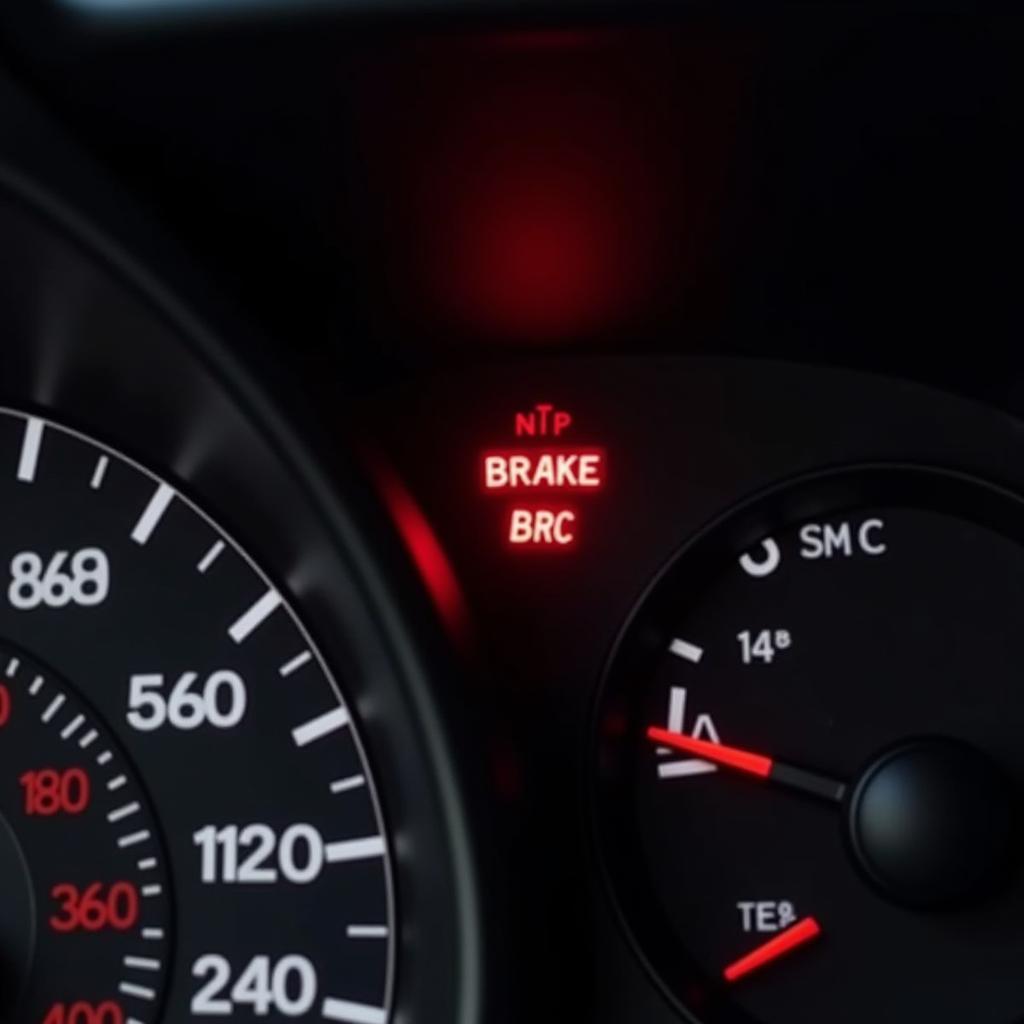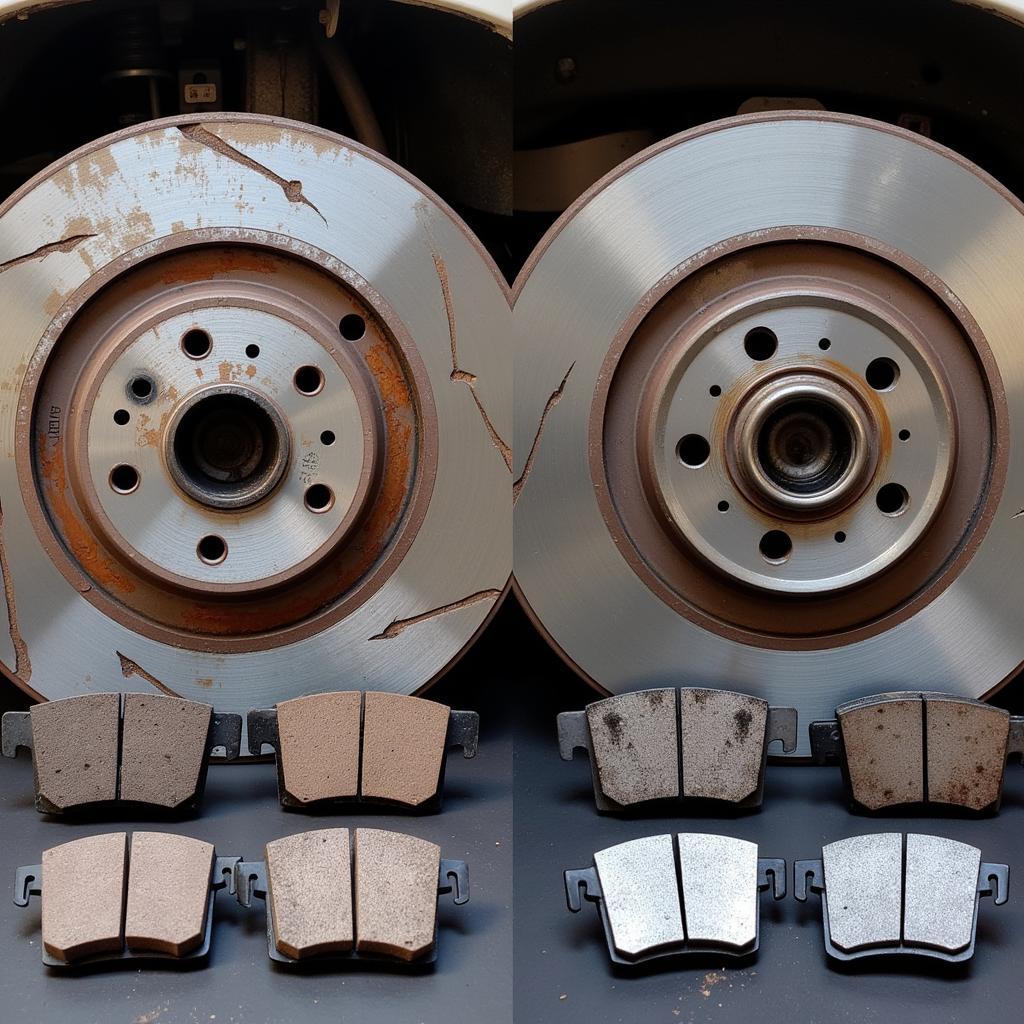The ominous glow of the T100 brake warning light can send shivers down any driver’s spine. This crucial indicator, nestled among the dashboard gauges, signals a potential issue within your vehicle’s braking system. Ignoring this warning could jeopardize your safety and the well-being of others on the road. This comprehensive guide delves into the intricacies of the T100 brake warning light, equipping you with the knowledge to diagnose and address the underlying problem effectively.
Understanding the T100 Brake Warning Light
The T100 brake warning light, often accompanied by the word “BRAKE” or an exclamation mark within a circle, serves as an early warning system for your braking system. When illuminated, it indicates a potential malfunction that requires immediate attention.
While the specific triggers for the T100 brake warning light may vary depending on the year and model of your Toyota T100, some common culprits include:
- Low brake fluid level: This is the most frequent cause. Brake fluid is the lifeblood of your braking system, and a shortage can significantly impair braking performance.
- Engaged parking brake: While seemingly obvious, it’s easy to overlook a partially engaged parking brake.
- Faulty brake light switch: This switch activates the brake lights when you press the pedal. A malfunction can illuminate the T100 brake warning light.
- Worn brake pads: Brake pads are designed to wear down over time. Excessively worn pads can trigger the warning light.
- ABS issue: If your T100 is equipped with an Anti-lock Braking System (ABS), a problem within this system can also activate the warning light.
 Toyota T100 Dashboard with Brake Warning Light Illuminated
Toyota T100 Dashboard with Brake Warning Light Illuminated
Diagnosing the Problem: A Step-by-Step Approach
Before diving into repairs, it’s crucial to accurately identify the root cause of the illuminated T100 brake warning light. Follow these systematic steps to pinpoint the issue:
- Check the Parking Brake: Ensure the parking brake is fully released.
- Inspect Brake Fluid Level: Locate the brake fluid reservoir under the hood. The reservoir is typically translucent with a “MIN” and “MAX” marking. If the fluid level is below the “MIN” line, add the appropriate brake fluid as specified in your owner’s manual.
- Inspect Brake Pads: If the brake fluid level is adequate, visually inspect the brake pads through the wheel spokes. Look for signs of excessive wear. Thin brake pads need immediate replacement.
When to Seek Professional Help
If the above steps don’t resolve the issue, or if you encounter any of the following, it’s essential to seek professional assistance from a qualified mechanic or your trusted Toyota dealership:
- Brake Warning Light Remains On: A persistent warning light despite adequate brake fluid and functional brake lights suggests a more complex problem, such as a faulty ABS sensor or a hydraulic system issue.
- Spongy or Soft Brake Pedal: This indicates air in the brake lines, a potentially dangerous situation requiring immediate attention.
- Grinding Noise When Braking: This often signals severely worn brake pads, potentially damaging the rotors if left unattended.
- Vehicle Pulling to One Side While Braking: This points to uneven brake pad wear or a potential issue with the hydraulic system.
 Mechanic Diagnosing Brake Issue on Toyota T100
Mechanic Diagnosing Brake Issue on Toyota T100
Remote Diagnostic and Programming Solutions
In today’s technologically advanced automotive landscape, remote diagnostic and programming services offer a convenient and efficient way to address certain brake-related issues. By leveraging specialized software and equipment, qualified technicians can remotely access your T100’s onboard computer system to:
- Retrieve Diagnostic Trouble Codes (DTCs): These codes provide valuable insights into the specific areas of the braking system experiencing malfunctions.
- Analyze Sensor Data: Real-time data from wheel speed sensors, brake pressure sensors, and other components can be analyzed to identify anomalies.
- Perform Software Updates: In some cases, a simple software update to the ABS control module or other related systems can resolve certain brake warning light issues.
“Remote diagnostics have revolutionized the way we approach vehicle repairs,” says John Smith, a senior automotive diagnostician with over 20 years of experience. “By analyzing data remotely, we can often pinpoint the root cause of issues more efficiently and minimize unnecessary component replacements.”
The Importance of Timely Brake System Maintenance
Preventing brake-related problems is always preferable to addressing them after they arise. Adhering to a regular brake system maintenance schedule can significantly extend the lifespan of your brakes and enhance overall safety. Essential maintenance tasks include:
- Regular Brake Fluid Flushes: Brake fluid degrades over time, absorbing moisture and losing its effectiveness. Consult your owner’s manual for recommended fluid flush intervals, typically every 2 years or 30,000 miles.
- Brake Pad Inspections: Have your brake pads inspected at least once a year or every 12,000 miles, or more frequently if you frequently drive in heavy traffic or hilly terrain.
- Thorough Brake System Inspections: During regular maintenance visits, request a comprehensive brake system inspection, including the master cylinder, brake lines, calipers, and rotors, to detect and address any potential issues early on.
 New Brake Pads and Rotors for Toyota T100
New Brake Pads and Rotors for Toyota T100
Conclusion
The T100 brake warning light is not a signal to be ignored. Understanding its implications and taking prompt action is paramount to maintaining your safety on the road. By following the diagnostic steps outlined in this guide and seeking professional help when needed, you can ensure your T100’s braking system remains in optimal condition, providing peace of mind for you and your passengers.


